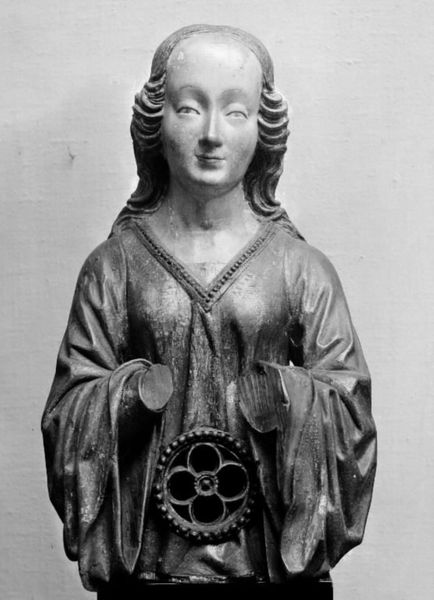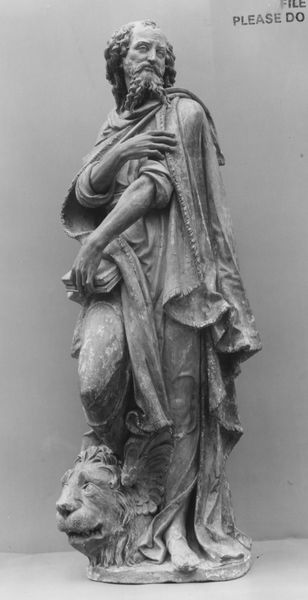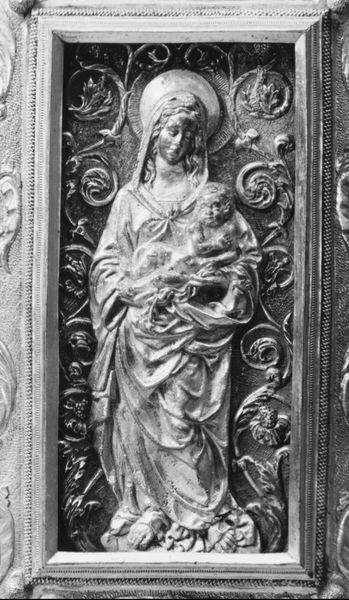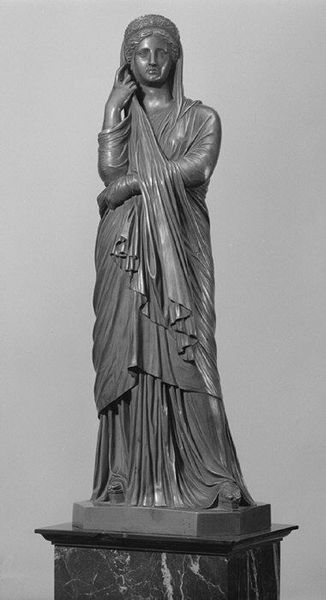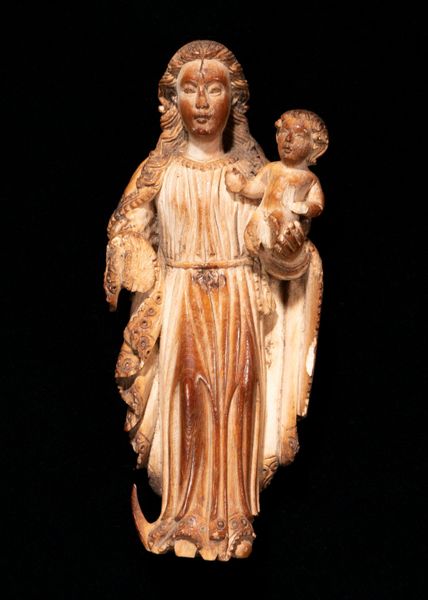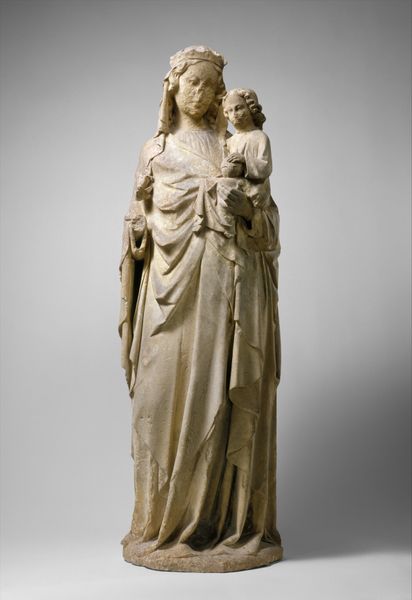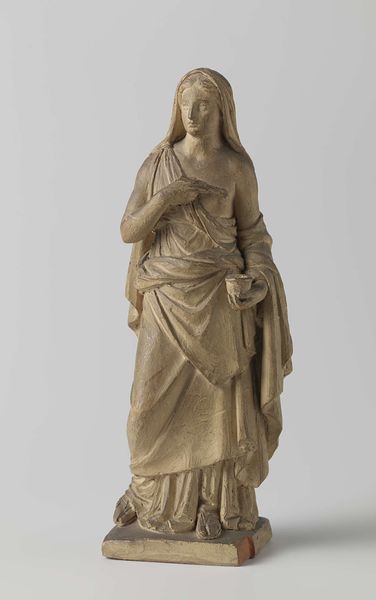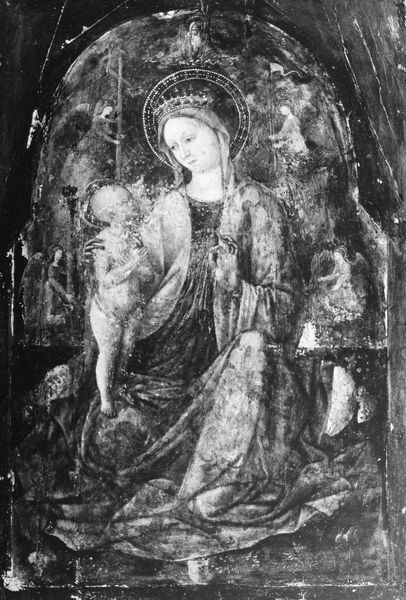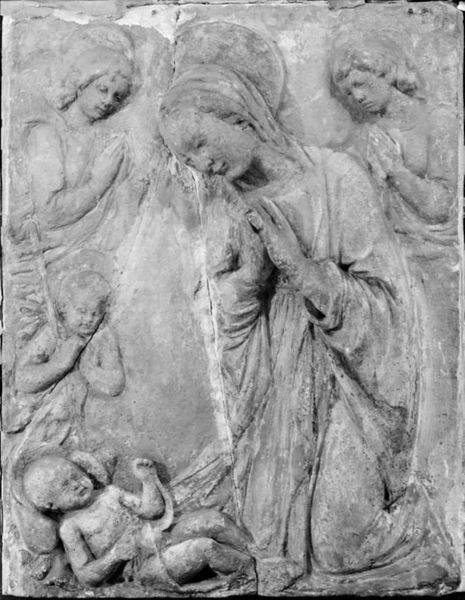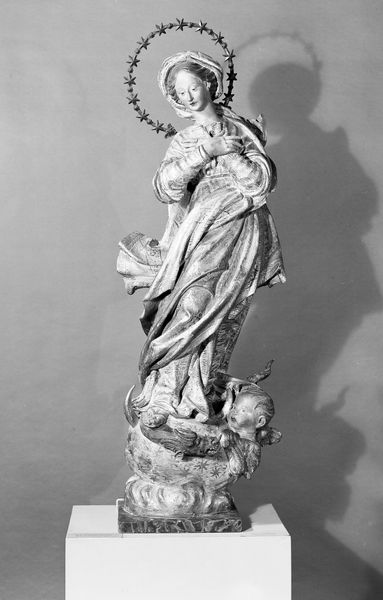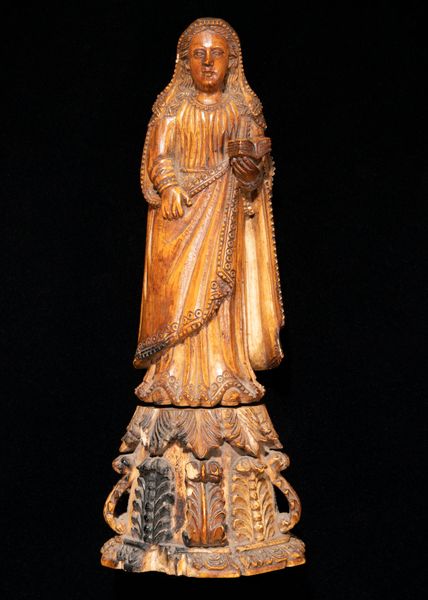
sculpture, marble
#
figuration
#
roman-art
#
ancient-mediterranean
#
sculpture
#
marble
Dimensions: 10 3/4 x 4 1/4 in. (27.31 x 10.8 cm)
Copyright: Public Domain
Curator: Before us, we have a marble statuette of the goddess Hekate, believed to have been crafted between 1 and 199 AD, and presently residing at the Metropolitan Museum of Art. Editor: There's something unsettlingly powerful about it. That three-headed form emerging from the stone… a multiplicity, I immediately think about its historical reception by feminist movements. Curator: Hekate’s depiction here, multiplied into three figures joined at the back, gives us insights into her syncretic evolution during the Roman period. While initially associated with liminal spaces, transitions, and the night, her character absorbed attributes of other deities. We observe Hekate triple-bodied and thus she sees in all directions. Editor: Yes! And it feels so subversive given what she represents… boundaries. In the patriarchal structure of the Roman Empire, it’s remarkable how this multifaceted representation embodies female power in navigating social and psychological thresholds, particularly for women and other marginalized individuals in this historical period. Hekate transcends fixed roles, refusing simple definition. Curator: Exactly. Public roles for women, generally, were more circumscribed during this era, however this iconography of Hekate suggests an agency, which she offered especially to those traversing realms – whether physical or metaphysical – denied to them. Editor: Looking closer at the marble itself, you sense both vulnerability and resilience, right? Even now her existence persists in modern witchcraft practices. Hekate’s narratives are forever being reshaped depending on the cultural landscapes interpreting her image. The politics of iconography continue! Curator: Absolutely. And its fascinating that although a cultural object with ancient origins it stands testament to human adaptability and its enduring relationship with symbolism throughout different eras.
Comments
No comments
Be the first to comment and join the conversation on the ultimate creative platform.
